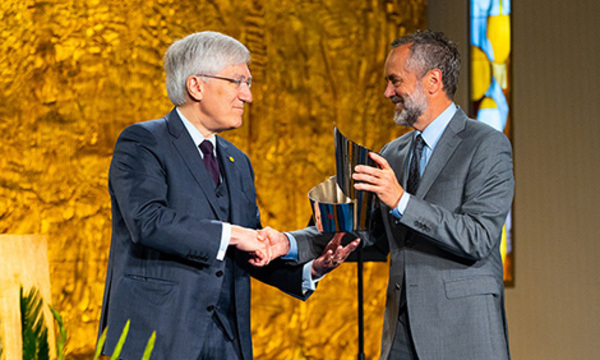
It has become commonplace for skeptics to assert rather boldly that the Gospel records — the primary witness to the ministry, teaching, crucifixion and resurrection of Jesus — are unreliable texts written by anonymous figures in foreign lands many years after the events they recount. High-profile textual scholar Bart Ehrman, for example, believes that one ought not put any stock in the authenticity of Gospel accounts because they were written late, away from good sources, and derive mainly from legends that grew out of stories told in corruptible fashion around campfires for decades.
Of course, there is a tremendous amount of compelling evidence to the contrary — evidence that shows the Gospels were written early and accurately by people who were either eyewitnesses or had access to firsthand testimony. A good detective combing through the Gospels would be very impressed with the incidental details of the narratives and how they paint an accurate picture of life in first-century Palestine. There is a resounding ring of authenticity in terms of what the Gospels say about agriculture, architecture, botany, customs, economics, language, law, politics, religion, social strata, topography, weather and much more. It would be hard to get all of this right if the Gospel writers had little or no contact with the time and the lands about which they were writing.
Over the last decade, a new area of research has confirmed that the writers of the Gospels did indeed have the kind of intimate and detailed knowledge of life in that time and place. And this new research comes from an in-depth study of personal names.
In 2002 an Israeli scholar by the name of Tal Ilan did some seemingly boring work that has yielded some important dividends for New Testament authentication. She sorted through documents, engravings, scraps of papyrus, ossuaries and the like from the time period surrounding Jesus and the apostles in order to make a list of over 3,000 personal names — along with whatever bits of information she could find about those names. It was as if she were compiling a phone book from ancient trash heaps.
Because of her work, it became possible for the first time to find out what personal names were the most popular during the time of Jesus and how those names were used. Why is this important? Well, if the Gospel writers really had no solid contact with the characters in the stories, if they were writing decades later and had never visited the lands about which they were writing, getting the names right would be unlikely to the point of impossible. It would be as if a person who had never set foot out of California were attempting to write a story about people living in Portugal 60 years ago and the writer perfectly captured all the details of the personal names of the day without traveling, without the Internet, without encyclopedias or libraries. Clearly, guesses and intuitions about Portuguese names from over a half-century earlier are exceedingly unlikely to match the real situation on the ground.
But this new research shows that the Gospel writers were “spot on” in regard to the popularity, frequency, proportion and usage of personal names in the text of Scripture, indicating very deep familiarity with life in the exact area and timeframe of Jesus and his earliest followers. British New Testament scholar Richard Bauckham did some exhaustive work correlating New Testament names (see chapters 3 and 4 of his Jesus and the Eyewitnesses, Eerdmans, 2006) with the list of 3,000 names compiled by Ilan and concluded the following:
- The Gospels were nearly perfect in how they captured the frequency of names among Palestinian Jews of the time. For instance, Ilan’s list of the 10 most popular names matched rank for rank the list of the most frequent names in the Gospels and Acts. This is an extraordinary confirmatory correlation.
- By contrast, if you examine the most popular Jewish names in a different region (such as Egypt) at the time, the list is dramatically different. The pattern of names does not match what we know the pattern to be in Palestine.
- Also by contrast, if you examine the names that appear in the Apocryphal Gospels (such as the Gospels of Thomas, Mary, Judas), you discover that the frequency and proportion of names in these writings do not match what we know to be true of names from the land and time of Jesus. Hence the Apocryphal Gospels do not have the ring of authenticity with regard to personal names and are rightly called into question.
There is much more to say about how the use of personal names in the Gospels and Acts helps to demonstrate these texts as authentic records of the time, but I’ll point you to Ilan and Bauckman for the details. But rest assured that the very best scholarship has demonstrated, yet again, not just that the Gospels are based on eyewitnesses reports, but that these are eyewitness accounts of an extremely high quality! Contra Bart Ehrman and others skeptics, we have excellent reason to believe that we have a very accurate picture of the life, teachings, death and resurrection of our Lord and Savior, Jesus Christ.
Craig J. Hazen is the founder and director of Biola’s M.A. in Christian apologetics program and author of the novel Five Sacred Crossings. He holds a Ph.D. from the University of California, Santa Barbara.
 Biola University
Biola University
.jpg)

